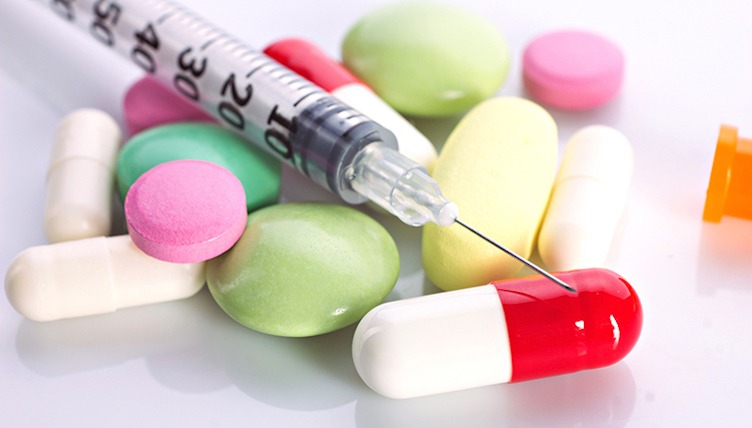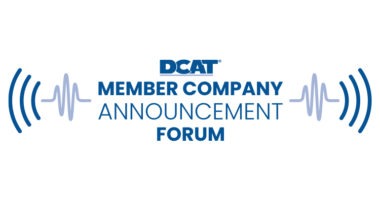What is Trending: Orphan Drugs
Orphan drugs represent a niche sector in the global pharmaceutical market, but have accounted for approximately 40% of new drug approvals in the US over the past three years. Traditionally the focus of smaller innovator companies, the pharmaceutical majors also are targeting drugs to treat rare diseases. So which companies and products are making the mark?
Market opportunities in orphan drugs
Orphan drugs are defined as prescription medicines developed for rare diseases and conditions, which, in the US, affect fewer than 200,000 people, or, in the European Union, affect 5 per 10,000 people or fewer. Orphan diseases currently encompass more than 7,000 diseases and conditions, affecting up to 30 million people in the US, 50% of whom are children, according to information from the Tufts Center for the Study of Drug Development.
The Orphan Drug Act, which was enacted in the US in 1983, provides special status to a drug or biological product to treat a rare disease or condition. Orphan designation qualifies the sponsor of the drug for various development incentives, including tax credits for qualified clinical testing, certain exemptions from prescription-drug user fees, and incentives for market exclusivity.
In 2017, 39%, or 18 of the 46 new molecular entities (NMEs) approved by the FDA’s Center for Drug Evaluation and Research (CDER) were orphan drugs (see Table I at end of the article), continuing a recent trend of approximately 40% of NME approvals being orphan drugs. In 2016, 9 of the 22 NMEs approved by the FDA were orphan drugs. Of these 22 NME approvals, two were diagnostic agents, so 9, or 45%, of the new drugs approved in 2016 were orphan drugs. In 2015, 47%, or 21 of the 45 NMES approved by the FDA’s CDER were orphan drugs, and in 2014, 41%, or 17 of the 41 NMEs approved were orphan drugs.
The pace of orphan-drug development and approvals can also be seen by tracking the number of orphan indications approved for drugs (which includes additional orphan indications for existing drugs). In 2017, the FDA approved 80 orphan indications and in 2018, it approved 57 in the first eight months of the year, the highest numbers annually since the passage of the Orphan Drug Act, according to a recent analysis by the IQVIA Institute for Human Data Science. The combination of scientific advances, along with a growing commitment by policy makers to advance precision medicine, is fueling the increased number of orphan therapies, according to the study.
Cost can be a factor for orphan drugs. Although the median annual cost for an orphan drug in 2017 was over $46,800, the median annual cost for the top 10 rare-disease therapies used by the greatest number of patients was much lower at $1,216, according to the IQVIA study. Overall, the report points out that drug spending in the US is evolving from an emphasis on high-volume, low-cost drugs for chronic diseases toward drugs with lower volumes but with higher value in terms of patient outcomes.
Spending on orphan indications has increased moderately, and these drugs represent only a small part of the overall medicine budget. The orphan drug share of the total volume of pharmaceuticals used in the US declined from a peak of 0.6% in 2003 to 0.3% in 2015, but it rose to 0.4% by 2017, according to the IQVIA study. Overall, total drug spending in the US in 2017 was $451 billion, with almost 56% spent on non-orphan traditional drugs, 34.7% spent on non-orphan specialty drugs, and 9.6% spent on orphan indications of approved orphan drugs.
While the total aggregate number of approved orphan drugs increased from 364 in 2013 to 487 in 2017, the share of total drug spending tied to orphan indication use increased from 8.1% to 9.6%, up from about 3% in 1993, according to the IQVIA study. Non-orphan use of these molecules represents 15.3% of overall medicines spending, reflecting that for those molecules with both orphan and non-orphan indications, the non-orphan indications represent much of their use and sales. Use of orphan drugs for their approved orphan indications account for approximately $43 billion.
In terms of mix between traditional and specialty medicines, overall, specialty medicines’ share of total medicine spending has risen from 11% in 1997 to 43% in 2017 while spending on orphan drugs has risen from 4% to 10% during the same period, according to the IQVIA study. Many orphan drugs are specialty products, and 87% of orphan spending falls within the specialty medicines category.
Development challenges
Given the niche therapeutic focus of orphan drugs, orphan-drug development faces special challenges in recruiting sufficient numbers of patients for clinical trials. A recent analysis by the Tufts Center for the Study of Drug Development estimates that on average, it takes 15.1 years to go from first patent filing to product launch, 18% longer than the average time required for all new drugs.
The Tufts study examined 46 first-in-class, orphan NMEs approved by the FDA between 1999 and 2012 and found that development time for drugs to treat ultra-orphan diseases—those in the US that only affect up to a few hundred patients—is even longer: 17.2 years.
“Creating new medicines to treat orphan diseases continues to pose unique challenges, not the least of which is the logistical difficulty of working with small patient populations that are, in the vast majority of cases, widely geographically dispersed,” said Christopher-Paul Milne, Research Associate Professor and Director of Research at Tufts Center for Drug Development at Tufts University School of Medicine, who conducted the analysis. He noted while new approaches to study design, including use of patient advocacy groups and adaptive clinical trials, are helping to mitigate development problems, orphan-drug development is likely to continue to face difficulty due, in part, to a lack of animal models and biomarkers.
The Tufts study also found that designations and approvals for orphan oncology drugs outpaced orphan-drug development in all other therapeutic areas. Orphan drug developers encountered an average of 4.2 special challenges in the course of research and development conducted during 1999–2012. Orphan drugs focused on central nervous system or cardiovascular indications experienced the greatest number of development challenges.
| Table I: Orphan Drugs Approved as New Molecular Entities (New Drug Applications (NDAs) and Original Biologics License Applications (BLAs) in 2017 by the US Food and Drug Administration’s Center for Drug Evaluation and Research. | ||
| Company | Brand name (active ingredient); application type | Indication |
| Aeterna Zentaris | Macrilen (macimorelin acetate); NDA | Diagnosis of adult growth hormone deficiency |
| AstraZeneca | Calquence (acalabrutinib); NDA | Mantle-cell lymphoma |
| Bayer | Aliqopa (copanlisib); NDA | Relapsed follicular lymphoma |
| BioMarin Pharmaceutical | Brineura (cerliponase alfa); BLA | A specific form of Batten disease |
| Celgene | Idhifa (enasidenib); NDA | Relapsed or refractory acute myeloid leukemia in patients with a specific genetic mutation |
| Chemo Research | benznidazole; NDA | Chagas disease |
| Lexicon Pharmaceuticals | Xermelo (telotristat ethyl); NDA | Carcinoid syndrome diarrhea |
| Merck & Co. | Prevymis (letermovir); NDA | To prevent infection after bone marrow transplant |
| Merck KGaA and Pfizer | Bavencio (avelumab); BLA | Metastatic Merkel -cell carcinoma (a rare form of skin cancer) |
| Mitsubishi Tanabe Pharma America | Radicava (edaravone); NDA | Amyotrophic lateral sclerosis (Lou Gehrig’s disease) |
| Novartis | Rydapt (midostaurin); NDA | Acute myeloid leukemia in patients with a specific genetic mutation, FLT3, in combination with chemotherapy |
| Pfizer | Besponsa (inotuzumab ozogamicin); BLA | Relapsed or refractory B-cell precursor acute lymphoblastic leukemia |
| PTC Therapeutics | Emflaza (deflazacort); NDA | Duchenne muscular dystrophy |
| Roche | Hemlibra (emicizumab); BLA | To reduce the frequency of bleeding episodes in adult and pediatric patients with hemophilia A who have developed antibodies called Factor VIII (FVIII) inhibitors |
| Takeda Pharmaceutical | Alunbrig (brigatinib); NDA | Anaplastic lymphoma kinase (ALK)-positive metastatic non-small cell lung cancer |
| Tesaro | Zejula (niraparib); NDA | Epithelial ovarian, fallopian tube or primary peritoneal cancer |
| Teva Pharmaceuticals | Austedo (deutetrabenazine); NDA | Chorea associated with Huntington’s disease |
| Ultragenyx Pharm | Mepsevii (vestronidase alfa-vjbk); BLA | Sly syndrome |
|
PTC Therapeutic acquired rights to Emflaza (deflazacort) for the treatment of Duchenne muscular dystrophy in the US from Marathon Pharmaceuticals in April 2017. Takeda acquired Ariad Pharmaceuticals in February 2017. Source: US Food and Drug Administration’s Center for Drug Evaluation and Research and company information. |
||





